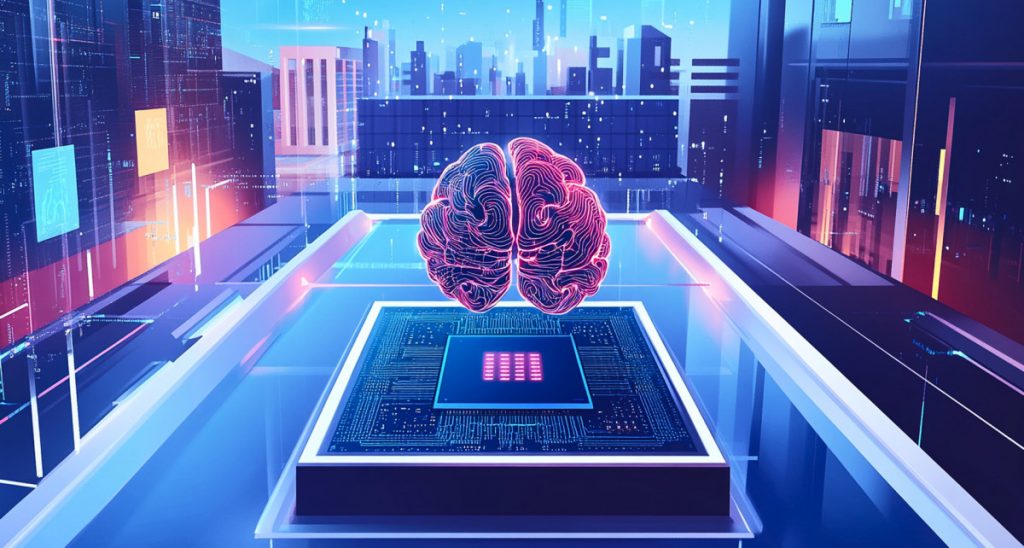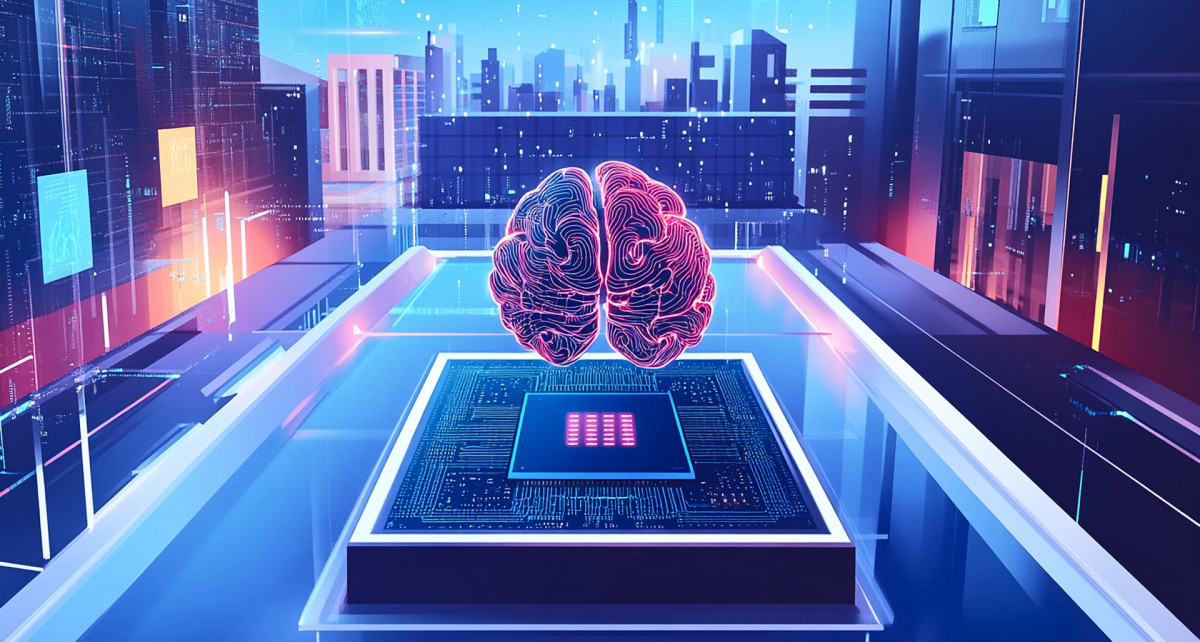
Alisa Davidson
Published: October 22, 2025 at 3:53 am Updated: October 22, 2025 at 3:53 am

Edited and fact-checked:
October 22, 2025 at 3:53 am
In Brief
Computing is undergoing a historic transformation as quantum, neuromorphic, optical, biological, and decentralized architectures converge to surpass the limits of traditional silicon and redefine the future of computation.

Traditional computing faces a reckoning. As artificial intelligence demands escalate and Moore’s Law approaches physical limits, the industry stands at an inflection point where incremental improvements no longer suffice. The United Nations designated 2025 as the International Year of Quantum Science and Technology, recognizing the tectonic shift underway in computational infrastructure. This recognition arrives as multiple alternative architectures mature simultaneously, each addressing distinct bottlenecks that have constrained innovation for decades.
Quantum Computing: From Laboratory Curiosity to Commercial Reality
The quantum computing sector achieved critical breakthroughs in 2024, marking a pivot from research exploration to deployment readiness. Global investment in quantum technology surged to $1.5 billion in 2024, nearly double the previous year’s total, according to Crunchbase data. This capital influx coincides with meaningful technical progress that addresses longstanding stability challenges.
Error correction emerged as the defining achievement of the past year. Companies including IBM, Google, and Microsoft advanced quantum error suppression technologies that dramatically reduce failure rates relative to qubit count. Google’s Willow processor demonstrated below-threshold error correction, while IBM’s quantum roadmap targets 200 logical qubits by 2028 using low-density parity check codes that require 10,000 physical qubits.
Government investment accelerated in parallel. Japan committed $7.4 billion to quantum development, Spain pledged $900 million, and Singapore invested $222 million in quantum research infrastructure. These public commitments reflect strategic positioning as quantum capabilities transition from theoretical advantage to practical application.
McKinsey research indicates 55 percent of quantum industry leaders now have production use cases, up from 33 percent in 2023. While these applications remain specialized, targeting optimization problems and molecular simulation where quantum advantages are clearest, the trajectory points toward broader commercial viability. The global quantum computing market reached approximately $1 billion in 2024 and projects growth to $8.6 billion by 2030.
Current quantum systems operate at temperatures colder than outer space, presenting practical deployment constraints. Recent research into room-temperature quantum components offers potential pathways to more accessible systems, though significant engineering challenges remain before widespread implementation becomes feasible.
The path to practical quantum computing involves overcoming multiple technical hurdles simultaneously. Comprehensive analysis from AI News Hub examines how researchers are addressing qubit stability and error correction challenges, revealing that advances in quantum error suppression have reduced failure rates by orders of magnitude compared to systems from just two years ago.
Neuromorphic Computing: Mimicking the Brain’s Efficiency
Neuromorphic computing addresses the growing power consumption crisis in artificial intelligence. Traditional GPU-based training and inference consume exponentially increasing energy as models scale. Neuromorphic architectures, inspired by biological neural networks, offer a fundamentally different approach that prioritizes efficiency over raw computational throughput.
Intel’s Loihi 2 chip processes 1 million neurons while consuming approximately 1 watt of power, achieving 10-fold efficiency gains over conventional processors for specific tasks. IBM’s NorthPole chip, featuring 256 cores and 22 billion transistors, demonstrates 25 times greater energy efficiency and 22 times faster performance than NVIDIA’s V100 GPU for inference operations.
The neuromorphic computing market grew from $54.2 million in 2024 to a projected $8.36 billion by October 2025, reflecting 89.7 percent compound annual growth. This explosive expansion stems from real-world deployments in edge computing environments where power constraints make traditional approaches impractical.
Intel’s Hala Point system, unveiled in April 2024, represents the current state of the art. The system integrates 1,152 Loihi 2 chips, simulating 1.15 billion artificial neurons and 128 billion synapses while drawing only kilowatts of power. Applications span predictive maintenance in industrial settings, real-time sensory processing in robotics, and smart prosthetics that improve mobility through enhanced feedback systems.
The fundamental innovation in neuromorphic hardware involves co-locating memory and processing units, eliminating the memory wall bottleneck that plagues von Neumann architectures. This design enables massive parallelism and reduces energy-intensive data movement between separate components. Technologies like memristors act as resistors with memory capability, mimicking synaptic plasticity at the device level.
These architectural innovations have profound implications for edge computing and autonomous systems. AI News Hub’s detailed exploration of neuromorphic architectures reveals how brain-inspired chips can process real-time sensory data with up to 1000x less power consumption than traditional processors, enabling applications from drone navigation to medical devices that operate continuously on minimal battery capacity.
Despite remarkable progress, neuromorphic computing faces scalability challenges. Current systems excel at specific tasks but lack the general-purpose flexibility of traditional processors. The industry requires standardized benchmarks and programming frameworks before neuromorphic chips achieve mainstream adoption beyond specialized applications.
GPU Marketplaces: Democratizing Computing Access
The GPU shortage crisis catalyzed development of decentralized computing marketplaces that challenge traditional cloud provider monopolies. Platforms including Akash Network, io.net, Render Network, and emerging competitors created liquid markets where individuals and organizations trade computing resources directly.
Akash Network operates as a decentralized cloud marketplace leveraging underutilized data center capacity. The platform achieved 150-200 GPUs at 50-70 percent utilization rates, annualizing approximately $500,000 to $1 million in gross merchandise value by late 2023. The network expanded significantly through 2024 as enterprises sought alternatives to hyperscaler pricing.
Decentralized GPU networks address multiple market failures simultaneously. Traditional cloud providers charge premium rates while maintaining artificial scarcity. Akash and competitors enable GPU owners to monetize idle capacity while offering users access to computing power at discounts of 30-80 percent compared to AWS or Google Cloud pricing.
The blockchain-based coordination layer provides transparent pricing discovery and trustless settlement. Smart contracts formalize agreements between compute providers and users, ensuring payment security without centralized intermediaries. This auction-based model creates competitive pressure that benefits both sides of the marketplace.
Platforms like Argentum AI pioneered living benchmark systems that learn from marketplace behavior to optimize resource allocation. These AI-driven matching engines analyze bidding patterns, execution telemetry, and staking behavior to generate recommendations on optimal pricing and workload placement. The approach represents market-driven optimization rather than static algorithms.
io.net assembled over one million GPUs from independent data centers, cryptocurrency miners, and distributed networks by 2024. Render Network focuses on 3D rendering and AI image generation workloads, creating a peer-to-peer marketplace where artists and developers access GPU power on demand. The token-based incentive structures align provider and user interests while enabling global resource pooling.
Challenges remain before decentralized marketplaces achieve parity with established cloud providers. Quality of service guarantees, network latency considerations, and workload security require continued innovation. However, the fundamental economics favor distributed models as GPU availability expands beyond traditional data center operators.
Optical Computing: Processing at Light Speed
Photonic computing leverages light instead of electrons for computation, offering theoretical advantages in speed, bandwidth, and energy consumption. Recent breakthroughs accelerated commercial viability timelines as research advances translate into demonstrable prototype systems.
The optical computing sector raised $3.6 billion over five years as technology giants including Google, Meta, and OpenAI recognized photonics as critical infrastructure for sustaining AI progress. MIT researchers developed photonic AI accelerators processing wireless signals in nanoseconds, achieving 100 times faster performance than digital alternatives while maintaining 95 percent accuracy.
Universities including University of Pittsburgh, UC Santa Barbara, and Institute of Science Tokyo collaborated on photonic in-memory computing that addresses previous limitations. Their magneto-optic memory cells demonstrated three orders of magnitude better endurance than alternative non-volatile approaches, achieving 2.4 billion switching cycles at nanosecond speeds. This breakthrough enables practical optical neural networks that can be programmed with standard CMOS circuitry.
Chinese research institutions announced ultra-compact photonic AI chips in September 2025, with the Shanghai Institute of Optics and Fine Mechanics demonstrating systems exceeding 100-way parallelism. Companies including Lightmatter pioneered hybrid photonic-electronic processors and interconnects that alleviate data bottlenecks in traditional chip communication.
Near-term commercial deployment focuses on data center interconnects and specialized accelerators rather than general-purpose processors. Broadcom’s co-packaged optics technology achieves 70 percent power reduction compared to traditional transceivers while supporting 51.2 Tbps switching capacity. NVIDIA integrated optical technologies into GPU cluster interconnects, validating photonics for immediate AI infrastructure scaling.
Market projections anticipate first optical processor shipments in 2027-2028, initially targeting custom systems and non-recurring engineering services. By 2034, analysts estimate nearly 1 million optical processing units will be deployed, representing a multi-billion dollar market with 101 percent compound annual growth rate from 2027 to 2034.
Significant technical hurdles persist. Optical logic gates require cascadability, scalability, and recovery from optical losses to compete effectively with electronic alternatives. Optical memory remains particularly challenging, with most current designs requiring hybrid architectures that combine photonic processing with electronic memory systems.
DNA and Biological Computing: Nature’s Information Architecture
DNA computing represents the most speculative yet potentially transformative approach to information processing. Biological systems store and manipulate information with density and efficiency that exceeds any synthetic alternative. A single gram of DNA can theoretically store 215 petabytes of data, orders of magnitude beyond conventional storage media.
Research focuses on two distinct applications: DNA as storage medium and DNA as computational substrate. Microsoft and University of Washington demonstrated successful data encoding and retrieval from synthetic DNA, proving the technical feasibility of biological storage. The approach offers archival properties suited for long-term data preservation with minimal energy requirements after initial encoding.
Computational DNA systems remain largely theoretical but show promise for specific optimization problems. Biological computation occurs through chemical reactions that evaluate multiple solution paths simultaneously, offering potential advantages for certain problem classes. However, reaction timescales measured in hours or days make DNA computing impractical for most applications where electronic systems excel.
Current research investigates hybrid approaches that leverage DNA’s strengths for specialized tasks within conventional computing systems. These architectures might use biological substrates for specific operations while relying on silicon for time-sensitive processing. The integration challenges remain substantial, and practical DNA computing systems likely require breakthroughs not yet achieved.
The Heterogeneous Computing Future
No single architecture will dominate the computing landscape. Each approach addresses specific bottlenecks and excels for particular workloads. Quantum systems target optimization and simulation problems. Neuromorphic processors enable efficient edge AI. GPU marketplaces democratize access to existing resources. Optical processors promise speed and efficiency for interconnects and specialized operations. Biological computing offers radical storage density for archival applications.
The next decade will witness increasing integration of these diverse technologies. Enterprise AI workflows might use optical interconnects to coordinate GPU clusters training quantum-optimized algorithms, with neuromorphic chips handling inference at edge devices. This heterogeneous approach maximizes strengths while mitigating individual limitations.
Investment patterns confirm this trajectory. Venture capital flows into all five domains simultaneously, suggesting the market anticipates multiple winners rather than a single successor to current silicon-based systems. Companies that master integration across architectural boundaries will capture disproportionate value as the computing ecosystem fragments and specializes.
The transformation from general-purpose computing to specialized, heterogeneous systems mirrors earlier industry evolution. Just as GPUs emerged to handle parallel workloads poorly suited to CPUs, the current wave introduces architectures optimized for specific computational patterns. The key difference: multiple alternatives are maturing simultaneously rather than sequentially, creating a more complex but ultimately more capable computing landscape.
FAQ 1: What will replace traditional computers?
Answer: No single technology will replace traditional computers. Instead, we’re moving toward specialized systems for different tasks. Quantum computers will handle complex optimization, neuromorphic chips will power efficient AI at the edge, optical processors will speed up data centers, and GPU marketplaces will make computing more affordable. Think of it like tools in a toolbox—each serves a specific purpose rather than one tool doing everything.
FAQ 2: What is neuromorphic computing?
Answer: Neuromorphic computing mimics how the human brain works, using far less energy than traditional chips. Intel’s Loihi 2 chip can process 1 million neurons using just 1 watt of power—10 times more efficient than regular processors. This technology enables smart devices, robots, and IoT sensors to run AI without draining batteries or requiring massive power supplies.
FAQ 3: How do GPU marketplaces work?
Answer: GPU marketplaces connect people with unused computing power to those who need it. Platforms like Akash Network and io.net use blockchain to match buyers and sellers directly, cutting out middlemen like AWS. Users can rent GPUs for 30-80% less than traditional cloud providers. It works like Airbnb—owners list their available GPUs, users bid for access, and smart contracts handle secure payment.
FAQ 4: Is quantum computing available now?
Answer: Yes, but only for specialized tasks. In 2025, 55% of quantum companies have working use cases, mainly for optimization problems, drug discovery, and cryptography. The market reached $1 billion in 2024 and will grow to $8.6 billion by 2030. However, general-purpose quantum computers that solve everyday problems are still years away. Current systems also require extreme cooling, though room-temperature research is advancing.
FAQ 5: When will optical computers be available?
Answer: First optical processors will ship in 2027-2028 for data centers and specialized AI tasks. These chips use light instead of electricity, making them 100 times faster and more energy-efficient than current processors. By 2034, nearly 1 million optical processors will be in use. However, fully optical computers remain distant—current systems combine light-based processing with traditional electronic components.
Disclaimer
In line with the Trust Project guidelines, please note that the information provided on this page is not intended to be and should not be interpreted as legal, tax, investment, financial, or any other form of advice. It is important to only invest what you can afford to lose and to seek independent financial advice if you have any doubts. For further information, we suggest referring to the terms and conditions as well as the help and support pages provided by the issuer or advertiser. MetaversePost is committed to accurate, unbiased reporting, but market conditions are subject to change without notice.
About The Author
Alisa, a dedicated journalist at the MPost, specializes in cryptocurrency, zero-knowledge proofs, investments, and the expansive realm of Web3. With a keen eye for emerging trends and technologies, she delivers comprehensive coverage to inform and engage readers in the ever-evolving landscape of digital finance.
More articles

Alisa, a dedicated journalist at the MPost, specializes in cryptocurrency, zero-knowledge proofs, investments, and the expansive realm of Web3. With a keen eye for emerging trends and technologies, she delivers comprehensive coverage to inform and engage readers in the ever-evolving landscape of digital finance.


